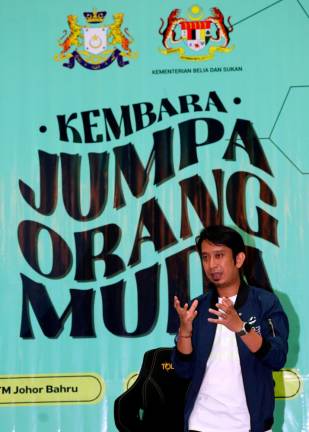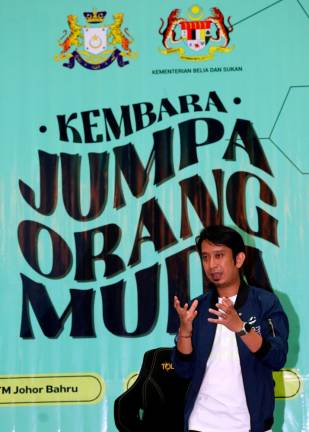WHILE not as well-publicised as the other pollutants, pharmaceutical or drug pollution is rapidly becoming a policy concern for their degrading and toxifying impact on the environment, particularly via water sources, especially freshwater (rivers, lakes, water catchments), as “aquatic micropollutants”.
For example, according to the Cary Institute of Ecosystem Studies, “pharmaceutical pollution in freshwater (among others) is largely unstudied”.
Covid-19 has provided the impetus and catalyst for further acceleration in the growth of pharmaceutical industries leading to high-risk pollution across the world.
Worldwide revenue of the pharmaceutical industry reached US$1.4 trillion (RM6.12 trillion) in 2021, according to ResearchandMarkets.com.
But the tide is shifting and the “crustal displacement” in the policy discourse is that there has been growing awareness and consciousness regarding the ecological impact of pharmaceuticals and what is known as active pharmaceutical ingredients (API) disposal, discharge and release over the years now due to the global reconnaissance and findings precipitated by the off-shoring and outsourcing and relocation of the pharmaceutical industries’ production networks to the so-called “Third World” countries.
APIs are any substances or compounds that are designed to be utilised in the production of a pharmaceutical dosage form and, when so used, become an active component thereof that helps to diagnose, treat or prevent differently.
In addition to freshwater sources, both APIs and finished pharmaceutical products infiltrate or enter the environment via the ocean, underground water as well as landfills.
Due to the nature of the role they play, wastewater and sewage treatment plants (STPs) host pharmaceutical pollutants via urine, faeces and wastes from the body.
Besides medical and drug products, personal care products such as toothpaste and shampoos are counterpart elements that contribute to pharmaceutical pollution.
The Fourth Session of the International Conference on Chemicals Management nominated what is termed as, “environmentally persistent pharmaceutical products” (EPPPs) – which contain APIs – as an emerging policy issue in 2015.
These pollutants are also classified as contaminants of emerging concern (CEC).
Even where the concentration is low, APIs/EPPPs/CEC can cause an inimical effect on living organisms and do not degrade easily, and persist for longer periods in the environment due to their stable structure.
Traces of pharmaceutical components from antidepressants, antibiotics, painkillers and birth control pills are some of the common pollutants found in freshwater sources, and are considered the leading environmentally dangerous drugs.
Additionally, pharmaceutical pollutions are a higher associated risk in human and aquatic organisms’ endocrine (or hormonal) system as endocrine disrupting chemicals.
Endocrine systems release hormones into the bloodstream of humans and animals, which is critical in controlling mood, physical growth and development, energy level, reproductive capacity, etc.
For instance, based on a study, birth control pills have a high level of progestogens to which frogs are very sensitive.
Female tadpoles that inhabit polluted areas are subjected to reproduction issues resulting from infertility.
Globally, 25% of the rivers are impacted whereby this is inclusive of not only urban but also remote areas.
Developing and less developing countries are more exposed (to pharmaceutical pollution), reflecting the wider disparities arising from the North-South divide.
A study published by the Proceedings of the National Academy of Science – “Pharmaceutical Pollution of the World’s Rivers” shows that parts of South America, sub-Saharan Africa and South Asia are highly rated pharmaceutical pollutant hubs.
The study “monitored 1,052 sampling sites along 258 rivers in 104 countries on all continents, thus representing the pharmaceutical fingerprint of 471.4 million people” in order to “measure the presence of 61 pharmaceuticals”.
In turn, these pharmaceuticals such as carbamazepine (a highly teratogenic substance, i.e, causing congenital disorders in a developing embryo or foetus and life-threatening allergic reactions such as Stevens-Johnson Syndrome or toxic epidermal necrolysis), metformin and caffeine are the three most frequently detected APIs.
It is found (among other things) that:
There are strong correlations between the levels of socioeconomic inequality in a country and higher pollution of pharmaceuticals in the rivers;
High levels of pharmaceutical pollution were most positively associated with regions of high local unemployment and poverty rates; and
The most pharmaceutically polluted countries and regions of the world are the ones that have been researched the least in the past as alluded to, namely parts of sub-Saharan Africa, South America and South Asia.
These regions have a high presence of pharmaceutical multinational companies as subsidiaries of the parent companies based in developed countries.
By extension, the same regions and hotspots have high levels of pharmaceutical pollutant concentration.
For example, “the highest mean cumulative concentration was observed in Lahore, Pakistan at 70.8 µg/L (micrograms per litre), with one sampling site reaching a maximum cumulative concentration of 189 µg/L.
This was followed by La Paz in Bolivia (68.9 µg/L mean, 297 µg/L maximum) and Addis Ababa in Ethiopia (51.3 µg/L mean, 74.2 µg/L maximum).
The most polluted sampling site was located in the Rio Seke (La Paz, Bolivia) and had a cumulative API concentration of 297 µg/L.
This sampling site was associated with both untreated sewage discharge and disposal of rubbish along the bank of the river.
Unlike North America and the Western hemisphere, lack of sophisticated waste removal technologies (e.g, natural, via micro-organisms and industrial via peracetic acid for example) and lax enforcement of regulations to mitigate pharmaceutical pollution is common in developing and less in developing countries, particularly in the regions concerned.
In the context of Malaysia, the focus on pharmaceutical pollution has often been neglected.
The pharmaceutical industry here is controlled by the Drug Control Authority (DCA) of the Health Ministry with the National Pharmaceutical Regulatory Agency (NPRA) as the secretariat and technical body.
The DCA’s executive and legal role (as provided for under the Control of Drugs and Cosmetics Regulation, 1984) is to ensure that every pharmaceutical product marketed in the country is safe and of sound quality.
The NPRA provides technical support by testing the quality and safety – quality control and performance evaluation – of pharmaceutical products.
Currently, the core legislation on the environment in Malaysia is the Environmental Quality Act (1974).
No laws specifically target pharmaceutical pollution as a discrete category in its own right.
A high number of Malaysians in less developed states get their water from groundwater sources.
Kelantan, Terengganu, Kedah, Perlis, Pahang, Sabah and Sarawak are the highest users of groundwater as a source of drinking water.
But the federal government has been keen to tap into groundwater as a viable alternative source for the nation as a whole.
If this is put into practice, then Malaysians might be at heightened risk of groundwater contamination if pharmaceutical pollution is not definitively tackled.
Already in what could be deemed as a “rare” finding as contained in “Detecting Human Pharmaceutical Pollutants in Malaysian Aquatic Environment: A new challenge for water quality management”, results show that the Hulu Langat River has been polluted by APIs and sewage treatment does not completely remove these pollutants.
Mefenamic acid, salicylic acid and glibenclamide are the most common pharmaceutical residues found in the Hulu Langat River.
The ineffectiveness of our conventional STPs is confirmed by Dr Nurfaizah Abu Tahrim from Universiti Kebangsaan Malaysia, which aren’t designed to treat pharmaceutical waste.
EMIR Research would like to recommend that due attention be afforded to upgrading our STPs to ensure that they deploy the latest waste removal technology – natural and industrial – such as solar photolysis (conversion of photon energy comprising of waves of electromagnetic radiation by which the contaminants are exposed – a process of irradiation) and advanced oxidation processes or AOPs (e.g, thermal plasma – increasing reactive oxygen and nitrogen species so as to dissolve in water and break down contaminants), respectively, which specifically targets pharmaceutical-based/driven pollution.
The government at all three levels (federal, state and local) should be more committed to tackling river and landfill pollution by rigorously and uncompromisingly enforcing the legislation (primary) and regulations (secondary) on the pharmaceutical industries.
Regular inspections and audits should be carried out at all three levels and these activities should be coordinated and synchronised, accordingly.
At the same time, the pharmaceutical industries should be assessed by private auditors in compliance with the environmental, social and governance due diligence.
Independent, non-executive directors should be empowered and trained to scrutinise and monitor pharmaceutical polluting activities.
At the micro-level, every pharmacist and medicine administrator in hospitals and clinics alongside pharmacies should educate and inform patients to properly dispose expired or extra unused drugs.
This will prevent patients from disposing the prescribed and non-prescribed (i.e, over the counter) drugs improperly (e.g, flushing it down the toilet bowl).
This is to prevent pharmaceutical wastes from contaminating the STPs as pre-emptive and precautionary measures.
In conclusion, we need to be more aware and mindful of the harm that comes from pharmaceutical pollution and go the extra mile in tackling these emerging challenges.
Jason Loh and Jachintha Joyce are part of a research team at EMIR Research, an independent think tank focused on strategic policy recommendations based on rigorous research. Comments: letters@thesundaily.com









